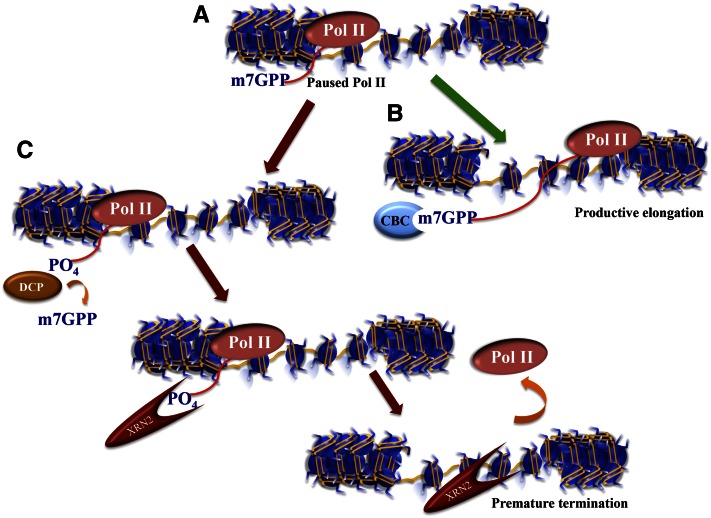Figure 2.
Multiple ways to regulate paused Pol II. Recent studies have revealed other mechanisms to regulate paused Pol II in addition to the DSIF/NELF pause–release mechanism shown in Figure 1. (A) Paused Pol II is a nonproductive state producing short ∼50-nt transcripts that have already been modified with a methyl-7-guanosine cap (m7GPP) protecting the 5′ end of the mRNA from exonucleolytic cleavage. (B) Normally, the cap-binding protein complex (CBC) recognizes the m7G cap and stays with the transcript to facilitate RNA processing and the export of the RNA to the cytoplasm. (C) A decapping enzyme (DCP) can remove the m7G cap, thereby restoring the 5′ phosphate of the RNA, which allows the RNA to be degraded by the XRN2 exonuclease. The 5′ -to-3′ processivity of the XRN2 exonuclease helps push the stalling Pol II off the transcript, resulting in transcription termination. Note that an entry point for XRN2-dependent Pol II termination can also come about from any endonucleolytic cleavage event, such as when the miRNA processing factor Drosha cleaves the stem–loop structure of the TAR region of the HIV-1 transcript (also see Fig. 1).

